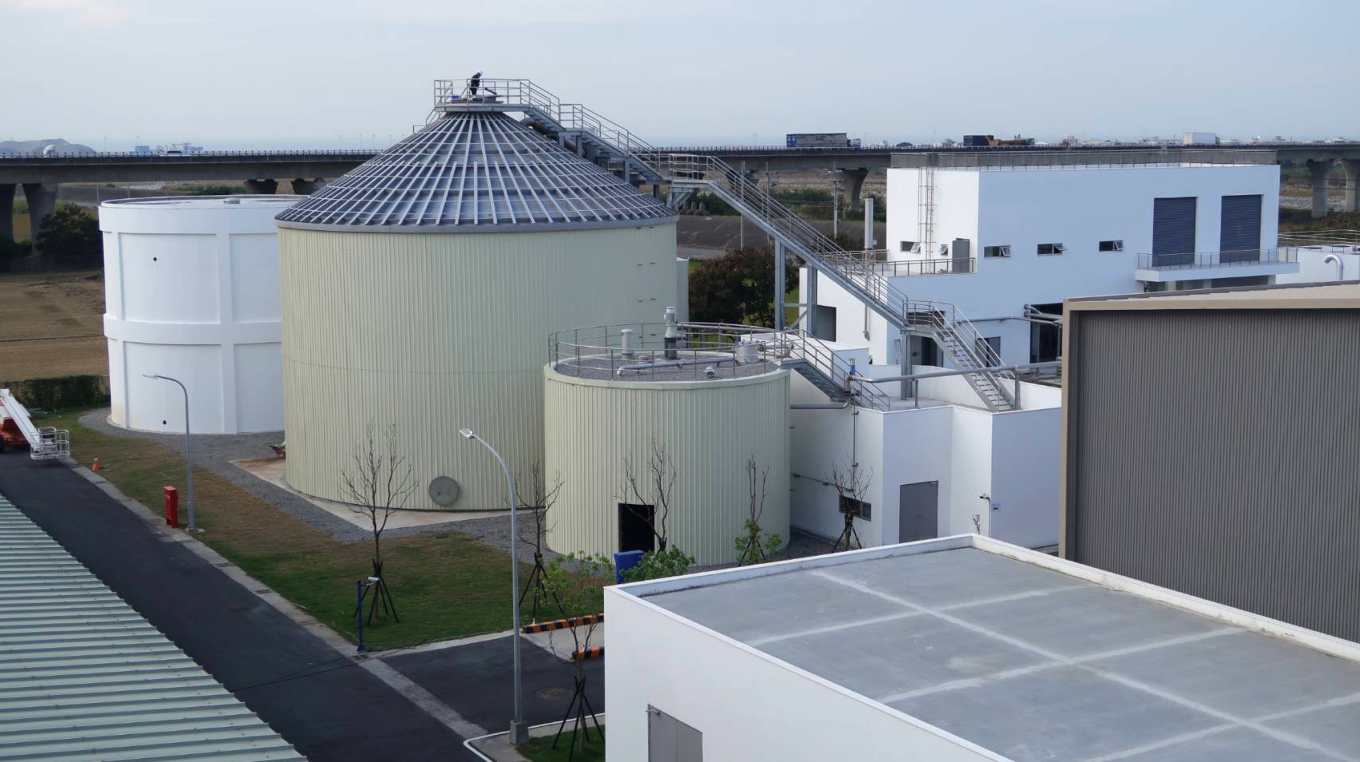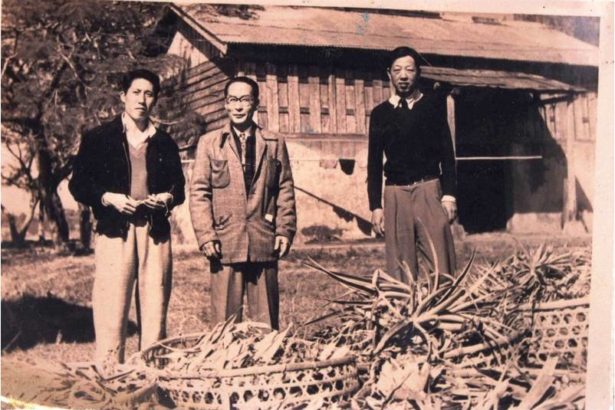The battle between epidemic prevention and kitchen waste 09 "kitchen waste forwarding power is strong, daily investment of 250 metric tons of kitchen waste, estimated annual output of 60,000 household electricity
Share23 + 1 Tweet EmailShares 23
In response to the prevention and control of African classical swine fever, the issue of degeneration of kitchen waste has become the focus of discussion. In addition to composting, food waste is put into biomass energy for power generation, which has also attracted attention from all walks of life. Kuo Wen-chien, head of the Department of Environmental Engineering and Science at Pingtung University of Science and Technology, says that foreign countries began to try it 20 or 30 years ago, mainly with expired food input. At present, there are more than 17000 biomass gas production plants.
Taiwan's biomass energy started relatively late, including a total of three plants that have completed and completed BOT, of which Tainan built a kitchen waste biogas power generation system in 2017, but the system can only be used for raw food waste. Taichung Waipu completed the construction of China's first bioenergy plant in 2018 and is expected to operate in June this year (2019). At present, it is also dominated by raw food waste, and it is estimated that every seven liters of food waste can generate electricity.
The BOT project of Taoyuan City Biomass Energy Center has been signed, and it is expected to be in operation before July 2021. It will be the only biomass energy plant in China that can put raw and cooked food waste (food waste from pigs). It is estimated that it can handle 250m tons of food waste a day, while putting in litter and sawdust. It is estimated that it can produce 200 million kilowatt-hours of electricity a year, which can provide electricity for 60,000 households.
Traditional composting is "aerobic respiration", and biomass energy is converted into energy by "anaerobic digestion".
In China, the removal of food waste is divided into two categories. Raw food waste (that is, foods that cannot be eaten by human beings, such as pericarp, leaf vegetables, bones and hard shells) will be used for composting; and cooked food waste (that is, foods that can be eaten by human beings, for example: any leftover cooked food, cans, seasonings) are mostly fed to pigs by pig farmers. At present, the method of composting in raw kitchen spare time is "traditional composting".
The traditional composting method mainly uses aerobic (oxygen-loving) microorganisms to decompose and metabolize organic matter materials in order to achieve a state suitable for crop growth. At present, all township public offices or private composting yards use this way to dispose of food waste. In China, there is a new way to treat kitchen waste, which is to decompose organic materials through "anaerobic digestion", allowing microorganisms to decompose under the condition of lack of oxygen, and use the gas produced in the decomposition process as renewable energy. This conversion process is called "bioenergy", and it is also another hotly discussed way to deal with kitchen waste in addition to traditional composting.
The International Energy Agency (International Energy Agency; IEA) defines biomass energy (Bioenergy) as energy that directly uses biomass (Biomass) as fuel or is treated to produce liquid or gaseous energy. Biomass generally refers to all organic matter from plants or animals with renewable resources; its sources include trees, agricultural crops, herbaceous and woody energy crops, urban organic wastes and manure (IEA, 2012). China's Renewable Energy Development Code defines biomass energy as "energy generated by direct use or treatment of agricultural and forestry plants, biogas and domestic organic wastes".


Kitchen waste crushing, grinding and other procedures (courtesy of Guo Wenjian, head of the Department of Environmental Engineering and Science, screen University of Science and Technology)
There is a lot of kitchen leftover soup in Taiwan, which needs to be adjusted on the ground.
At present, there are more and more technologies and discussions about making bioenergy from kitchen waste in China. Guo said that in addition to hardware equipment, software management also needs to be considered at the same time. Germany or Denmark, for example, started work 20 or 30 years ago, and now there are more than 17000 bioenergy gas plants. Food waste in foreign countries mainly comes from expired food, and the nature of food waste in Taiwan is soup water, so there will also be some places that need to be adjusted and localized in the follow-up of bioenergy treatment, in addition to the follow-up on the equipment. The experience of external adjustment, operation, maintenance and management in France is also a link worth learning from Taiwan.
Taiwan's Sansheng energy plants have been started one after another, and Taichung and Tainan have put into raw kitchen spare time to generate electricity.
There are also plans for biomass energy plants in various parts of the country. Taichung Waipu built the first biomass energy plant in China last year. At present, it mainly uses raw food waste for research and development. In response to the problem of African classical swine fever kitchen waste removal, it is working on whether the equipment in the plant can handle cooked food waste. The Taichung City Environmental Protection Bureau said that according to the current assessment, if pre-purification equipment such as oil fishing and decontamination are purchased, cooked kitchen waste should be able to be removed through biomass energy plants.
The Waipu Biomass Energy Plant is currently undergoing the first stage of construction, which is capable of handling 80 metric tons of kitchen waste per day. When the second phase is completed, the energy of the whole plant can reach 160 tons per day, and it is scheduled to start operation in June this year. It is estimated that each barrel of seven litres of kitchen waste can produce one kilowatt-hour of electricity, and every ton of raw kitchen waste can produce about 142 kilowatt-hours of electricity.
In 2017, Tainan Environmental Protection Bureau worked with the Industrial Technology Research Institute (hereinafter referred to as ITRI) Green Energy Institute to build Tainan's first kitchen waste biogas power generation demonstration system, which uses raw kitchen leftovers to produce biogas for power generation. However, ITRI said that because of the need for waste sources with low water content and stable composition, the system currently uses raw kitchen waste for demonstration research, and does not use cooked kitchen waste for power generation or other green energy development. at present, there are no plans to use cooked kitchen leftovers to generate electricity.
Taoyuan Biomass Energy Center can digest kitchen waste and is expected to supply electricity to 60,000 households a year.
The BOT project of Taoyuan Biomass Energy Center has been signed and is expected to be put into operation before July 110. Lu Mingyi, the chief technical officer of the Taoyuan City Environmental Protection Bureau, explained that the biomass energy center estimated that it could handle 250 metric tons of kitchen waste a day, compared with 150 metric tons per day in Taoyuan City, which could completely deal with the food waste in the city in the future.
The Taoyuan City Biomass Energy Center will also be the only bioenergy plant in China that can put cooked kitchen waste. In addition to raw and cooked kitchens, litter and sawdust will also be added. It is estimated that it can produce 200 million kilowatt-hours of electricity each year and supply electricity to 60,000 households.
Guo Wenjian said that because of the low added value of composting itself, if a large and centralized composting plant is used, the transportation cost of recycling kitchen waste and transporting compost products out is too high, so if composting is used, it should be decentralized and localized. Because the treatment of biomass energy plant is complex, and the process level is higher than composting technology, it is suggested that in metropolitan areas, such as Taipei and New Taipei, where there is a large amount of kitchen waste and more resources, it is a suitable place to set up a centralized biomass energy center.
Feature articles:
Epidemic Prevention and Kitchen waste War 01 "directly hit the kitchen leftovers to raise pigs, pig farmers: this is our life and property, we are more afraid of darts than anyone else!"
Epidemic Prevention and Kitchen waste War 02 "Pig Farmers' Civil War: food leftovers are risky and outdated. VS Kitchen wastes can be classified in detail except for high temperature cooking.
Epidemic Prevention and Kitchen waste War 03 "expert opinion: if you want to use kitchen waste, you must achieve 100 points, or leave the industry!" Distinguish between meat and non-meat in kitchen waste to reduce risk
Epidemic Prevention and Kitchen waste War 04 "Food waste ban is in a hurry, and the EPA jumps"Classical Swine Fever has not yet come in, the country is already in a mess."
Epidemic Prevention and the War of Kitchen waste 05 "opportunities and challenges for composting! Local kitchen waste can be made separately, even Daan Forest Park.
Epidemic Prevention and the War of Kitchen waste 06 "General inventory of the production and removal of Kitchen waste in Taiwan (Liudu)
The Battle of epidemic Prevention and Kitchen waste 07 "Total inventory of production and removal of Kitchen waste in Taiwan (Yunlin Pingtung)
Epidemic Prevention and the War of Kitchen waste 08 "Pingtung has something to say: the ban on kitchen waste has an impact on the black pig industry chain, and non-food waste feed also needs to be paid attention to.
The Battle of epidemic Prevention and Kitchen waste 09 "Kitchen waste forward electricity is very powerful, with 250 metric tons of Kitchen waste per day, with an estimated annual production of 60,000 households."
Share23 + 1 Tweet EmailShares 23
- Prev

Do not bet with God to win or lose, buy agricultural insurance card is really! The amount of claims settled in four years will reach 80 million, which will be protected by a special law.
Do not bet with God to win or lose, buy agricultural insurance card is really! The amount of claims settled in four years will reach 80 million, which will be protected by a special law.
- Next

A lifelong legend in the field of plant disease, Sun Shougong guarded Taiwan with a magnifying glass and developed "Sun Huang" to open up materials for microbial control.
A lifelong legend in the field of plant disease, Sun Shougong guarded Taiwan with a magnifying glass and developed "Sun Huang" to open up materials for microbial control.
Related
- A course of planting techniques and methods on how to grow carrots
- How to plant the latest tulips?
- Is it better to pick tea in the morning or in the afternoon? When is the best time for tea to be picked? what is the third or fifth tea?
- Launch Yuanxiao Happy combination Haocha + Tea Yuan healthy Taste
- Penghu Tourism "Fireworks 20 Parade with You"
- 2022 West Lake Happiness holds "Digital Revitalization Voucher" and draws iphone13 and laptop.
- Banqiao Fuzhou social houses are designed to change start-up combined with police elimination to create a safe and livable environment
- The convenient measure of "mechanical weeding" in Xinbei has been abused and the Agriculture Bureau has imposed heavy penalties on the illegal land consolidation.
- Changgeng University Joins Hands with Four Memory Factories to Rescue Memory Talent Shortage
- The list of Taiwan's top 100 MVP managers is listed by the Director-General of the Farmers' Association of Sanxia District.

